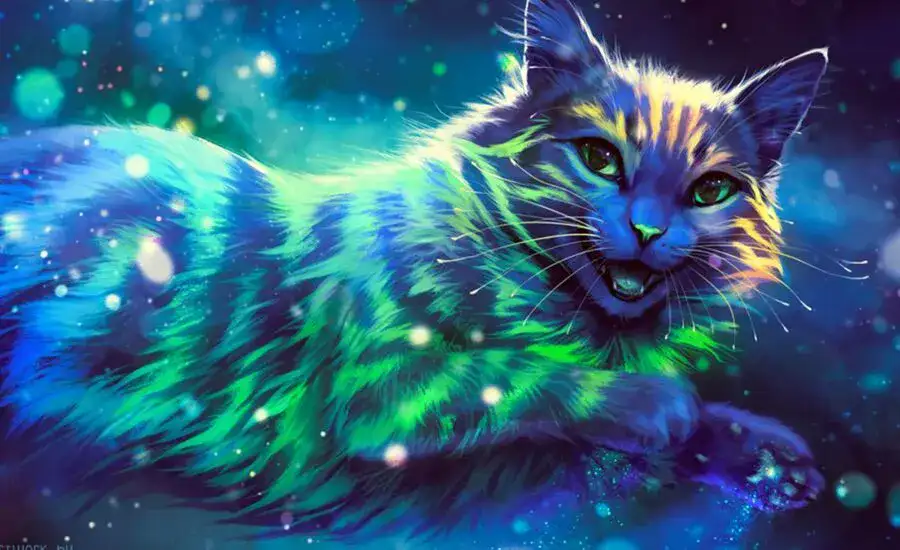In the ever-evolving world of art, one concept has captured the imagination of both creators and critics alike: “art:mfyjcu3hidu= cat.” This enigmatic term represents a novel blend of artistic innovation and digital evolution. Artists worldwide have embraced this phenomenon, transforming traditional art forms and redefining the boundaries of creative expression.
The Evolution of Art
To fully appreciate the significance of “art:mfyjcu3hidu= cat,” one must first understand the broader context of its emergence. Art, throughout history, has continuously evolved, reflecting societal changes and technological advancements. For instance, the Renaissance ushered in a new era of realism, while the Impressionist movement shifted focus to capturing fleeting moments. Today, we stand on the brink of another transformative phase, driven by digital technology and its influence on art.
The introduction of “art:mfyjcu3hidu= cat” exemplifies this shift. At its core, this term encapsulates a fusion of digital creativity and traditional art forms. Artists now leverage cutting-edge technology to create works that challenge conventional aesthetics and engage audiences in unprecedented ways. For example, the integration of artificial intelligence into the creative process allows artists to explore new dimensions of expression, generating artworks that blur the lines between human and machine-generated creativity.
Understanding “art:mfyjcu3hidu= cat”
To grasp the impact of “art:mfyjcu3hidu= cat,” consider the role of technology in shaping artistic practices. Initially, digital tools served as mere extensions of traditional techniques. Artists used software to mimic traditional brushstrokes or to enhance photographic images. Over time, however, these tools evolved into powerful mediums in their own right. Artists began experimenting with algorithms, machine learning, and data visualization, resulting in a new genre of art that defies categorization.
For instance, the use of generative algorithms has enabled artists to create complex, ever-evolving pieces that respond to user interactions or environmental stimuli. These dynamic artworks challenge viewers to reconsider their understanding of art as a static object. Instead, “art:mfyjcu3hidu= cat” embodies a fluid and interactive experience, inviting audiences to participate in the creative process.
Moreover, “art:mfyjcu3hidu= cat” highlights the growing importance of collaboration between artists and technologists. Artists increasingly work alongside engineers, data scientists, and programmers to develop innovative projects. This interdisciplinary approach fosters a rich exchange of ideas and techniques, leading to groundbreaking artworks that push the boundaries of what is possible.
The Role of Technology in Art
One notable example of this collaboration is the use of augmented reality (AR) in art. By overlaying digital elements onto physical spaces, AR technology allows artists to create immersive experiences that engage viewers in new ways. For instance, an artist might design a virtual sculpture that interacts with the surrounding environment, altering its appearance based on the viewer’s location or movements. Such works exemplify how “art:mfyjcu3hidu= cat” merges digital and physical realms to create novel artistic experiences.
Transitioning from these technological advancements, it’s essential to recognize how “art:mfyjcu3hidu= cat” influences artistic aesthetics and themes. Traditional art often focused on themes of beauty, human experience, and social commentary. In contrast, contemporary works influenced by “art:mfyjcu3hidu= cat” frequently explore themes of technology, data, and virtual realities. This shift reflects broader societal changes, as technology increasingly permeates our daily lives.
Impact on Artistic Aesthetics and Themes
Furthermore, “art:mfyjcu3hidu= cat” challenges traditional notions of authorship and originality. In the digital age, the concept of originality has become more fluid. Artists can now draw upon vast digital repositories of images, sounds, and data, remixing and recontextualizing them to create new works. This approach blurs the distinction between creator and curator, as artists assemble pieces from a global pool of digital resources.
To illustrate, consider a digital artwork that incorporates elements from various online sources. The artist might use machine learning algorithms to analyze and reinterpret these elements, resulting in a piece that reflects a collective digital consciousness. In this context, “art:mfyjcu3hidu= cat” embodies a collaborative and dynamic approach to art-making, where boundaries between individual and collective creation become increasingly ambiguous.
Examples of Technological Integration
Moreover, the impact of “art:mfyjcu3hidu= cat” extends beyond the art world, influencing other fields such as design, architecture, and entertainment. For example, the principles of generative design, inspired by digital art practices, have revolutionized architecture. Architects now use algorithms to optimize building designs, resulting in structures that are both aesthetically striking and functionally efficient. Similarly, in entertainment, immersive technologies like virtual reality (VR) and interactive storytelling draw on artistic concepts to create engaging and innovative experiences.
In addition, the rise of social media platforms has transformed how art is shared and consumed. Artists can now reach global audiences with ease, bypassing traditional gatekeepers such as galleries and art institutions. Social media not only amplifies the visibility of artworks but also fosters direct interactions between creators and viewers. This democratization of art allows for a more diverse range of voices and perspectives to be heard, enriching the cultural landscape.
Collaboration Between Artists and Technologists
To fully appreciate the impact of “art:mfyjcu3hidu= cat,” one must also consider its implications for the future of art and technology. As digital tools and technologies continue to advance, artists will undoubtedly explore new frontiers of creative expression. The ongoing convergence of art and technology promises to yield even more innovative and thought-provoking works, challenging our perceptions and expanding our understanding of what art can be.
Conclusion
“Art:mfyjcu3hidu= cat” represents a pivotal moment in the evolution of artistic expression. By embracing digital technologies and interdisciplinary collaborations, artists are pushing the boundaries of creativity and redefining the nature of art itself. As we navigate this exciting era of innovation, “art:mfyjcu3hidu= cat” serves as a testament to the boundless possibilities that lie ahead. The fusion of technology and artistry not only enriches our cultural landscape but also inspires us to envision new ways of engaging with the world around us. See more
